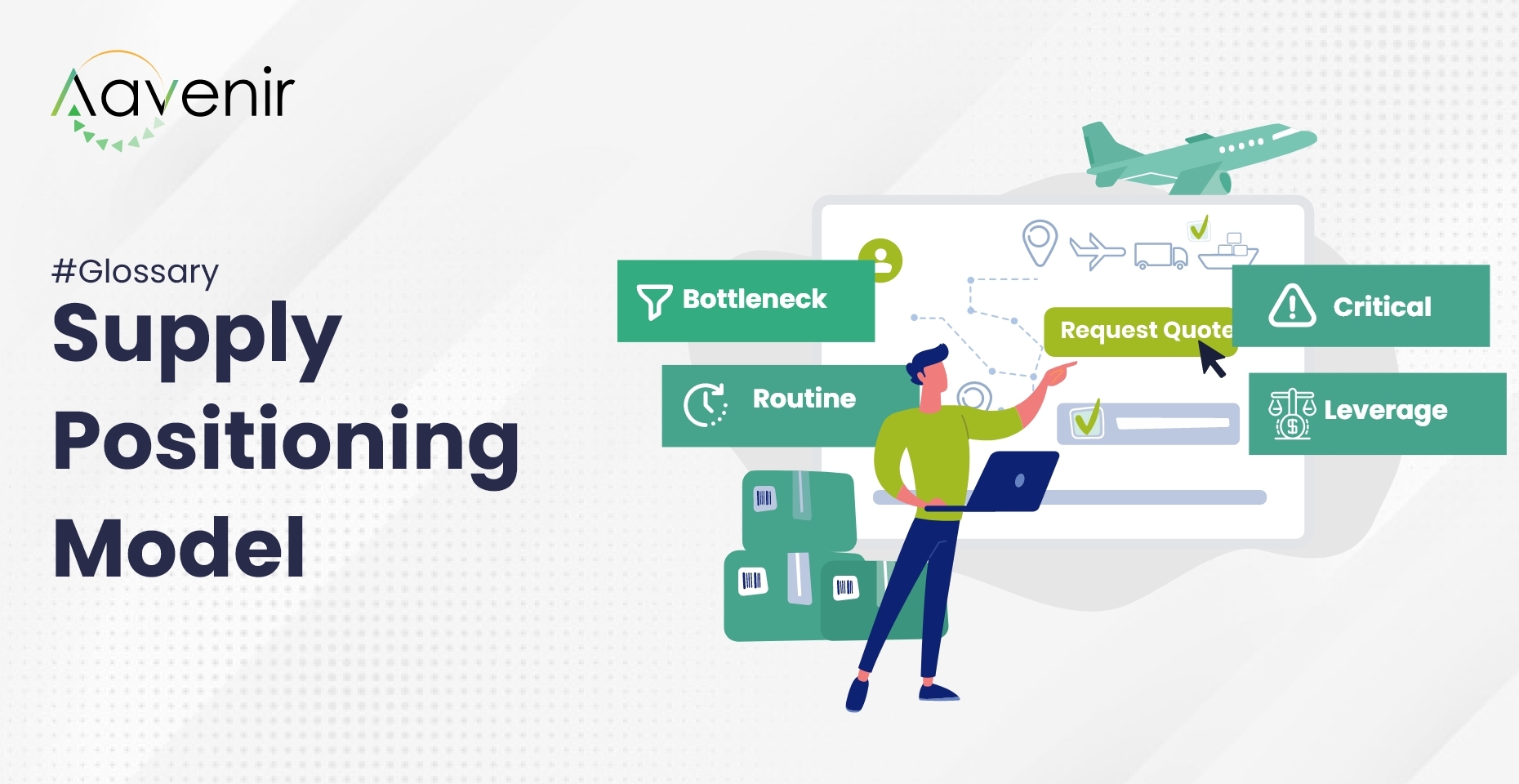What Is Supply Positioning Model?- Definition
The supply positioning model refers to segmenting the spend portfolio by risk and opportunity. With the help of this model, organizations rank their supplies based on the money spent with the supplier and the level of susceptibility a business has if that supplier fails.

Understanding Supply Positioning Model
Supplier positioning is the process of classifying spend with a supplier in terms of the profit potential and supply risk and assists in prioritising categories of spend and developing the right strategy.
Supply positioning is an analysis tool that seeks to map the importance to an organisation of the item being purchased against the complexity of the market that supplies it. It identifies the two variables of risk and spend as determining the type of commercial relationships that should be formed for supply agreements. Based on this, all procurement can be assigned to one of the four categories namely – strategic, routine or non-critical, and bottleneck items. With this knowledge, the supplier has a platform for prioritizing supplying activity based on the importance of the goods and developing the appropriate purchasing and supply relationships with the suppliers who supply them.
Benefits Of Supply Positioning Model
The advantages of the Supply Positioning approach include:
The advantages of the Supply Positioning approach include:
- Simplicity:
- It is easy to understand and is a strong communication tool that could be used to convince other departments of what they should have to do.
- This is because applying supply positioning to a particular context is a fairly straightforward process and facilitates easy mapping of the current situation.
- Focuses on those areas where potential benefits and risks are greatest:
- The model highlights the fact that each category of items will have an impact on the financials of an organization according to its use and that risk is associated with supply, depending on the number or range of suppliers in the marketplace.
- Based on this, the buyer can discover ways for improving company’s bottom line profits through cost reductions and efficiency gains.
Disadvantages Of Supply Positioning Model
- It ignores the fact that not all the risk of supply comes from within the relationship between customer and supplier. External environmental factors, especially competition, and the PESTEL factors can have a great impact.
- The supplier side of the buyer-seller relationship is considered a disregarded element in the model.
- It does not take into account the possible strategies and reactions of the supplier.
- Fixation on the model can restrict the development of appropriate relationships to suit the changing nature of market conditions and the power dynamics between the parties involved.
Explore Additional Resources to Know More
[aux_row columns=”2″]
[aux_col]
3 Win-Win Strategies to Negotiate with Powerful Vendors
Discover how to handle complicated, high-level business negotiations with vendors in this blog. Learn about the Top 3 Strategies to handle negotiations.
Read More
[/aux_col]
[aux_col]
Managing Vendor Relationships Effectively | Aavenir
What are some of the benefits of supplier relationship management? The key advantage of strong, healthy supplier relationships is that you can gain better value for your business.
[/aux_col][/aux_row]


